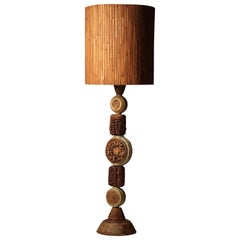
Bernard Rooke Brutalist Totem Floor Lamp with Shade, Made England in the 1960’s
View Similar Items
Want more images or videos?
Request additional images or videos from the seller
1 of 21
Bernard Rooke Brutalist Totem Floor Lamp with Shade, Made England in the 1960’s
About the Item
- Creator:Bernard Rooke (Maker)
- Dimensions:Height: 59.45 in (151 cm)Diameter: 10.63 in (27 cm)
- Style:Brutalist (Of the Period)
- Materials and Techniques:Pottery,Fired
- Place of Origin:
- Period:
- Date of Manufacture:1960s
- Condition:Wear consistent with age and use.
- Seller Location:London, GB
- Reference Number:1stDibs: LU2868324293662
About the Seller
5.0
Gold Seller
These expertly vetted sellers are highly rated and consistently exceed customer expectations.
Established in 2015
1stDibs seller since 2017
170 sales on 1stDibs
More From This SellerView All
- Bernard Rooke Brutalist Dragon Fly and Leaf Floor Lamp Organic Style 1960-1970By Bernard RookeLocated in London, GBAn organic and Brutalist style Floor Lamp with Dragon Fly and Leaf design. No chips or cracks. Easily rewired for all regions. Bernard Rooke (born 1938) is a British artist and studio potter. Rooke has exhibited his "Brutalist" ceramics and painting both in the UK and abroad with work in many collections both public and private including the Victoria and Albert Museum, Cleveland Museum of Art, Nuffield Foundation, Röhsska Museum in Sweden and the Trondheim Kunstmuseum in Norway. Bernard Rooke attended Ipswich School of Art studying painting and lithography before going on to study at Goldsmiths College of Art. It was while studying here that he decided to take up pottery. Although unfamiliar with this craft and tradition, he found that working with clay provided new opportunities for freedom of interpretation and creativity. In 1960 Rooke set up his first pottery in Forest Hill in South London along with Alan Wallwork. It was a very small room with enough space for a small electric kiln. He was initially using mainly hand building, coiling, blocking and slabbing techniques. While researching ideas, he was supporting himself by part-time lecturing at London University, Goldsmiths College and St Mary's College. In addition, Rooke's membership of 'The Craftsman Potters' Association' enabled him to show his work in a shop in Carnaby Street in London. In 1967, both the need for a larger working space and becoming disillusioned with living in London spurred Rooke into moving out of the city and to an old mill building in Swilland in Suffolk. Rooke wanted to widen the range of work so as to become more commercial. With the birth of his son, Aaron, and much needed work to be done on the mill, it was important to be able to make a living. In 1968, the Grand Metropolitan Hotel commissioned Rooke to make 120 standard lamps, 120 table lamps as well as a 24 foot long ceramic mural and another 9 foot high, which incorporated interior lighting. The money from the commission helped to pay for much needed restoration work on the mill. By the 1970s, a gallery space was opened in the windmill and run by Susan Rooke, Bernard's wife, selling work to locals and tourists as well as to American airmen based nearby. The vision for Mill Gallery was beginning to develop and alongside this a reputation was building bringing in a good source of income. Sons Aaron and Felix were becoming more involved with the running of the pottery, giving Bernard more time to develop new ideas and designs and more time to continue with his painting. In 2004, the Rooke family decided not to sell to the public through the gallery anymore and close the pottery to concentrate more on painting and printmaking. In 2017 Bernard's lighting was featured in the Exhibition: “Glass, Light, Paint & Clay” at the Peterborough Museum and Art Gallery. The exhibition featured four artists: Bernard Rooke, John Maltby...Category
Vintage 1960s English Brutalist Floor Lamps
MaterialsPottery
- Bernard Rooke Brutalist Abstract Table Light in Organic Style 1960’s-1970By Bernard RookeLocated in London, GBAn organic and Brutalist style Butterly table lamp. No chips or cracks. Has been professionally rewired and PAT tested. Easily rewired for all regions. Bernard Rooke (born 1938) is a British artist and studio potter. Rooke has exhibited his "Brutalist" ceramics and painting both in the UK and abroad with work in many collections both public and private including the Victoria and Albert Museum, Cleveland Museum of Art, Nuffield Foundation, Röhsska Museum in Sweden and the Trondheim Kunstmuseum in Norway. Bernard Rooke attended Ipswich School of Art studying painting and lithography before going on to study at Goldsmiths College of Art. It was while studying here that he decided to take up pottery. Although unfamiliar with this craft and tradition, he found that working with clay provided new opportunities for freedom of interpretation and creativity. In 1960 Rooke set up his first pottery in Forest Hill in South London along with Alan Wallwork. It was a very small room with enough space for a small electric kiln. He was initially using mainly hand building, coiling, blocking and slabbing techniques. While researching ideas, he was supporting himself by part-time lecturing at London University, Goldsmiths College and St Mary's College. In addition, Rooke's membership of 'The Craftsman Potters' Association' enabled him to show his work in a shop in Carnaby Street in London. In 1967, both the need for a larger working space and becoming disillusioned with living in London spurred Rooke into moving out of the city and to an old mill building in Swilland in Suffolk. Rooke wanted to widen the range of work so as to become more commercial. With the birth of his son, Aaron, and much needed work to be done on the mill, it was important to be able to make a living. In 1968, the Grand Metropolitan Hotel commissioned Rooke to make 120 standard lamps, 120 table lamps as well as a 24 foot long ceramic mural and another 9 foot high, which incorporated interior lighting. The money from the commission helped to pay for much needed restoration work on the mill. By the 1970s, a gallery space was opened in the windmill and run by Susan Rooke, Bernard's wife, selling work to locals and tourists as well as to American airmen based nearby. The vision for Mill Gallery was beginning to develop and alongside this a reputation was building bringing in a good source of income. Sons Aaron and Felix were becoming more involved with the running of the pottery, giving Bernard more time to develop new ideas and designs and more time to continue with his painting. In 2004, the Rooke family decided not to sell to the public through the gallery anymore and close the pottery to concentrate more on painting and printmaking. In 2017 Bernard's lighting was featured in the Exhibition: “Glass, Light, Paint & Clay” at the Peterborough Museum and Art Gallery. The exhibition featured four artists: Bernard Rooke, John Maltby...Category
Vintage 1960s English Brutalist Table Lamps
MaterialsPottery
- Mid-Century Modern Brutalist Ceramic Table Lamp by Bernard RookeBy Bernard RookeLocated in London, GBAn organic and Brutalist style Butterly table lamp. No chips or cracks. Easily retired for all regions. Bernard Rooke (born 1938) is a British artist and studio potter. Rooke has exhibited his "Brutalist" ceramics and painting both in the UK and abroad with work in many collections both public and private including the Victoria and Albert Museum, Cleveland Museum of Art, Nuffield Foundation, Röhsska Museum in Sweden and the Trondheim Kunstmuseum in Norway. Bernard Rooke attended Ipswich School of Art studying painting and lithography before going on to study at Goldsmiths College of Art. It was while studying here that he decided to take up pottery. Although unfamiliar with this craft and tradition, he found that working with clay provided new opportunities for freedom of interpretation and creativity. In 1960 Rooke set up his first pottery in Forest Hill in South London along with Alan Wallwork. It was a very small room with enough space for a small electric kiln. He was initially using mainly hand building, coiling, blocking and slabbing techniques. While researching ideas, he was supporting himself by part-time lecturing at London University, Goldsmiths College and St Mary's College. In addition, Rooke's membership of 'The Craftsman Potters' Association' enabled him to show his work in a shop in Carnaby Street in London. In 1967, both the need for a larger working space and becoming disillusioned with living in London spurred Rooke into moving out of the city and to an old mill building in Swilland in Suffolk. Rooke wanted to widen the range of work so as to become more commercial. With the birth of his son, Aaron, and much needed work to be done on the mill, it was important to be able to make a living. In 1968, the Grand Metropolitan Hotel commissioned Rooke to make 120 standard lamps, 120 table lamps as well as a 24 foot long ceramic mural and another 9 foot high, which incorporated interior lighting. The money from the commission helped to pay for much needed restoration work on the mill. By the 1970s, a gallery space was opened in the windmill and run by Susan Rooke, Bernard's wife, selling work to locals and tourists as well as to American airmen based nearby. The vision for Mill Gallery was beginning to develop and alongside this a reputation was building bringing in a good source of income. Sons Aaron and Felix were becoming more involved with the running of the pottery, giving Bernard more time to develop new ideas and designs and more time to continue with his painting. In 2004, the Rooke family decided not to sell to the public through the gallery anymore and close the pottery to concentrate more on painting and printmaking. In 2017 Bernard's lighting was featured in the Exhibition: “Glass, Light, Paint & Clay” at the Peterborough Museum and Art Gallery. The exhibition featured four artists: Bernard Rooke, John Maltby...Category
Vintage 1970s English Brutalist Table Lamps
MaterialsClay
- Mid-Century Modern Brutalist Ceramic Vase by Bernard RookeBy Bernard RookeLocated in London, GBAn organic and Brutalist style vase with Medallion motif on front and verso. Bernard Rooke (born 1938) is a British artist and studio potter. Rooke has exhibited his "Brutalist" ceramics and painting both in the UK and abroad with work in many collections both public and private including the Victoria and Albert Museum, Cleveland Museum of Art, Nuffield Foundation, Röhsska Museum in Sweden and the Trondheim Kunstmuseum in Norway. Bernard Rooke attended Ipswich School of Art studying painting and lithography before going on to study at Goldsmiths College of Art. It was while studying here that he decided to take up pottery. Although unfamiliar with this craft and tradition, he found that working with clay provided new opportunities for freedom of interpretation and creativity. In 1960 Rooke set up his first pottery in Forest Hill in South London along with Alan Wallwork. It was a very small room with enough space for a small electric kiln. He was initially using mainly hand building, coiling, blocking and slabbing techniques. While researching ideas, he was supporting himself by part-time lecturing at London University, Goldsmiths College and St Mary's College. In addition, Rooke's membership of 'The Craftsman Potters' Association' enabled him to show his work in a shop in Carnaby Street in London. In 1967, both the need for a larger working space and becoming disillusioned with living in London spurred Rooke into moving out of the city and to an old mill building in Swilland in Suffolk. Rooke wanted to widen the range of work so as to become more commercial. With the birth of his son, Aaron, and much needed work to be done on the mill, it was important to be able to make a living. In 1968, the Grand Metropolitan Hotel commissioned Rooke to make 120 standard lamps, 120 table lamps as well as a 24 foot long ceramic mural and another 9 foot high, which incorporated interior lighting. The money from the commission helped to pay for much needed restoration work on the mill. By the 1970s, a gallery space was opened in the windmill and run by Susan Rooke, Bernard's wife, selling work to locals and tourists as well as to American airmen based nearby. The vision for Mill Gallery was beginning to develop and alongside this a reputation was building bringing in a good source of income. Sons Aaron and Felix were becoming more involved with the running of the pottery, giving Bernard more time to develop new ideas and designs and more time to continue with his painting. In 2004, the Rooke family decided not to sell to the public through the gallery anymore and close the pottery to concentrate more on painting and printmaking. In 2017 Bernard's lighting was featured in the Exhibition: “Glass, Light, Paint & Clay” at the Peterborough Museum and Art Gallery. The exhibition featured four artists: Bernard Rooke, John Maltby...Category
Vintage 1960s English Brutalist Vases
MaterialsClay
- Mid Century Modern Ceramic Jardinière by Bernard RookeBy Bernard RookeLocated in London, GBAn organic and Brutalist style Jardine which would work perfectly with trailing foliage. Bernard Rooke (born 1938) is a British artist and studio potter. Rooke has exhibited his "Brutalist" ceramics and painting both in the UK and abroad with work in many collections both public and private including the Victoria and Albert Museum, Cleveland Museum of Art, Nuffield Foundation, Röhsska Museum in Sweden and the Trondheim Kunstmuseum in Norway. Bernard Rooke attended Ipswich School of Art studying painting and lithography before going on to study at Goldsmiths College of Art. It was while studying here that he decided to take up pottery. Although unfamiliar with this craft and tradition, he found that working with clay provided new opportunities for freedom of interpretation and creativity. In 1960 Rooke set up his first pottery in Forest Hill in South London along with Alan Wallwork. It was a very small room with enough space for a small electric kiln. He was initially using mainly hand building, coiling, blocking and slabbing techniques. While researching ideas, he was supporting himself by part-time lecturing at London University, Goldsmiths College and St Mary's College. In addition, Rooke's membership of 'The Craftsman Potters' Association' enabled him to show his work in a shop in Carnaby Street in London. In 1967, both the need for a larger working space and becoming disillusioned with living in London spurred Rooke into moving out of the city and to an old mill building in Swilland in Suffolk. Rooke wanted to widen the range of work so as to become more commercial. With the birth of his son, Aaron, and much needed work to be done on the mill, it was important to be able to make a living. In 1968, the Grand Metropolitan Hotel commissioned Rooke to make 120 standard lamps, 120 table lamps as well as a 24 foot long ceramic mural and another 9 foot high, which incorporated interior lighting. The money from the commission helped to pay for much needed restoration work on the mill. By the 1970s, a gallery space was opened in the windmill and run by Susan Rooke, Bernard's wife, selling work to locals and tourists as well as to American airmen based nearby. The vision for Mill Gallery was beginning to develop and alongside this a reputation was building bringing in a good source of income. Sons Aaron and Felix were becoming more involved with the running of the pottery, giving Bernard more time to develop new ideas and designs and more time to continue with his painting. In 2004, the Rooke family decided not to sell to the public through the gallery anymore and close the pottery to concentrate more on painting and printmaking. In 2017 Bernard's lighting was featured in the Exhibition: “Glass, Light, Paint & Clay” at the Peterborough Museum and Art Gallery. The exhibition featured four artists: Bernard Rooke, John Maltby...Category
Vintage 1970s English Brutalist Planters and Jardinieres
MaterialsClay
- Hala Zeist Desk Lamp in the Bauhaus Style Designed, 1930’s-1960’sBy Hala Zeist, Herman Theodoor Jan Anthoin BusquetLocated in London, GBPopular lamp which was designed by Busquet and manufactured by Hala Zeist Lampenfababriek in Holland, circa 1960s. This piece features a dark brown dome shade and a flat disc base. I...Category
Vintage 1960s Dutch Mid-Century Modern Table Lamps
MaterialsSteel, Chrome
You May Also Like
- Totem Lamp by Bernard Rooke ceramic , England, 1960By Bernard RookeLocated in Paris, FRTotem lamp by Bernard Rooke England 1960 Dim with shade : 150 cm height diameter 40 cm without shade 117 cm height and 26 cm diameter This design is an...Category
Mid-20th Century English Mid-Century Modern Floor Lamps
MaterialsCeramic, Earthenware
- Bernard Rooke Studio Ceramic Totem Lamp, England [I]By Bernard RookeLocated in London, GBA mid-20th century totem lamp by ceramicist Bernard Rooke, England. An early piece, and unusual to see this example of Rooke's work; hand-built, with great character. A tall piece ...Category
Mid-20th Century English Mid-Century Modern Floor Lamps
MaterialsMetal
- Bernard Rooke Studio Ceramic Totem Lamp, England [II]By Bernard RookeLocated in London, GBA mid-20th century totem lamp by ceramicist Bernard Rooke, England. An early piece, and unusual to see this example of Rooke's work; hand-built, with great character in natural sha...Category
Mid-20th Century English Mid-Century Modern Floor Lamps
MaterialsMetal
- Vintage TOTEM Ceramic Floor Lamp by Bernard Rooke, 1970sBy Bernard RookeLocated in Esbjerg, DKThis ceramic 'TOTEM Lamp' has four decorative main parts. It was designed by Bernard Rooke during the late 1960s. This is an early example from around 1970. It features a fluted Le K...Category
Vintage 1960s English Mid-Century Modern Floor Lamps
MaterialsCeramic
$1,139 Sale Price20% Off - Large Bernard Rooke Table or Floor Lamp with Original ShadeBy Bernard RookeLocated in London, GBA monumental and unusual lamp by British potter, Bernard Rooke. An early piece, probably dating from the 1960s, and initialled BR on the side. Large-scale single-piece Rooke lamps are rare to see - kiln size often a limiting-factor - particularly with an original shade. The base is hand-built, with the lower section finished in a glaze of green/grey. The upper part is glazed showing natural terracotta tones and features raised patterns and piercing, finishing in pierced loops at the top. Both the base and shade are in good original condition, with normal wear from age and use and the hand-making process. A firing crack to the interior flat section of the base appears stable, and is not visible in use. Wiring: The original wiring has been removed and will need to be replaced in the country of install to meet local needs. The lamp-holder takes a bayonet-fitting bulb and we recommend low-heat models to protect this piece for the future. Shade: The lamp has its original shade, which is rare, and this one is an unusual size for Rooke designs. Overall it has retained pretty good shape, with a little "ovalling", minor marks and occasional short crack to the liner. The fitting is a duplex...Category
Mid-20th Century British Mid-Century Modern Table Lamps
MaterialsCeramic
- Large Size Vintage Ceramic Table Lamp by Bernard Rooke, England, 1960sBy Bernard Rooke, Bernard Rooke StudioLocated in Stockholm, SEA large an very interesting handformed table lamp from the studio of noted British ceramicist, Bernard Rooke in the 1960s England. This special and sculptural table lamp is comprise...Category
Vintage 1960s British Brutalist Table Lamps
MaterialsCeramic, Stoneware
Recently Viewed
View AllMore Ways To Browse
Large Studio Pottery Lamp
Swedish Sculptural Table Lamp
Mural Lamp
Brutalist Lamp Set
South America Pottery
British Studio Art Pottery
Stone Table Uk
Brutalist Art Pottery
American Art Pottery Lamp
Brutalist Ceramic Light
Totem Floor Light
Windmill Weight
Windmill Weights
Large Totem Lamp
Vintage Furniture Suffolk
Mill Stone Table
Birth Of Mary
Norway Pottery
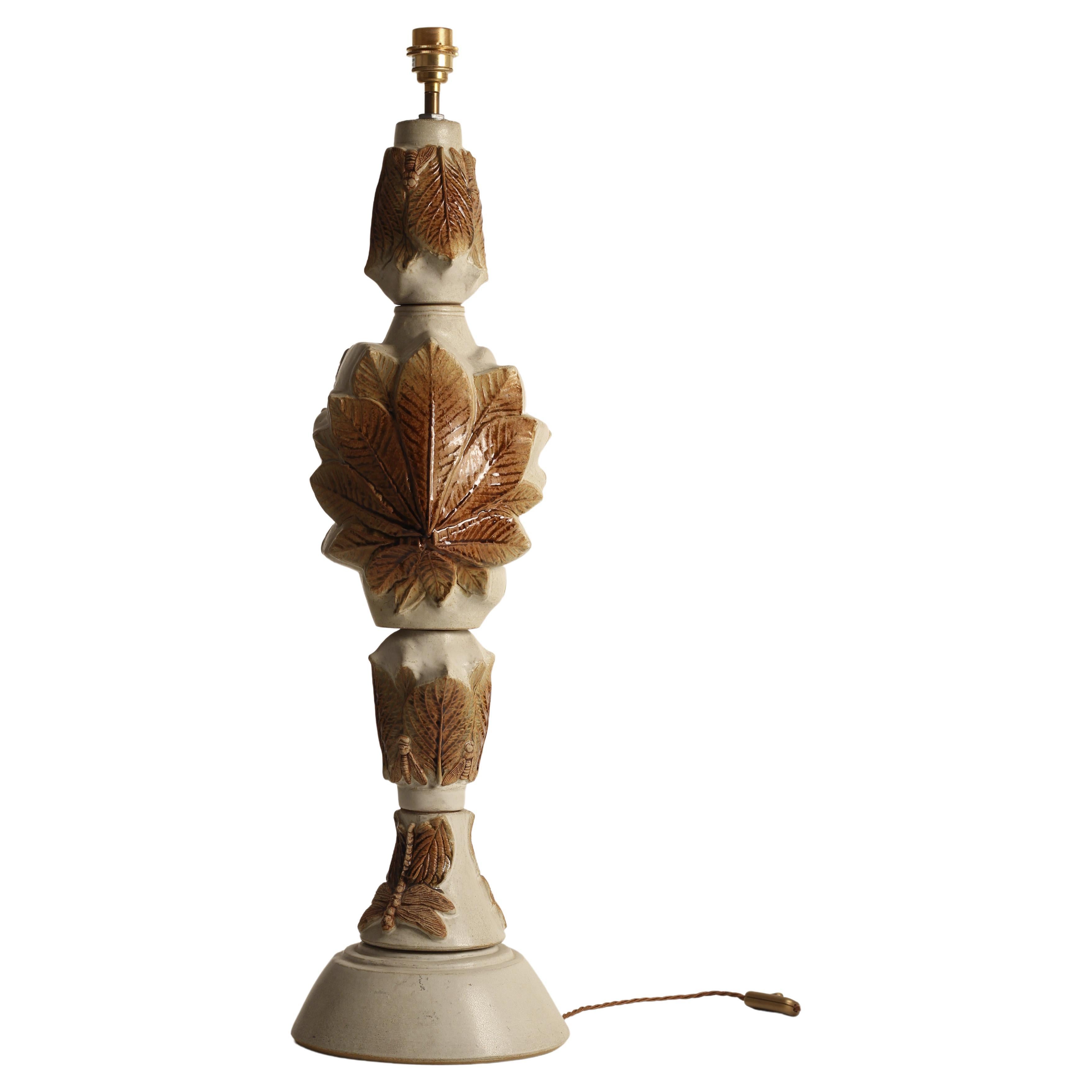

![Bernard Rooke Studio Ceramic Totem Lamp, England [I]](https://a.1stdibscdn.com/bernard-rooke-studio-ceramic-totem-lamp-england-for-sale/f_12672/f_371357421700844408779/f_37135742_1700844409088_bg_processed.jpg)
![Bernard Rooke Studio Ceramic Totem Lamp, England [II]](https://a.1stdibscdn.com/bernard-rooke-studio-ceramic-totem-lamp-england-ii-for-sale/f_12672/f_391439321712318998130/f_39143932_1712318998540_bg_processed.jpg)
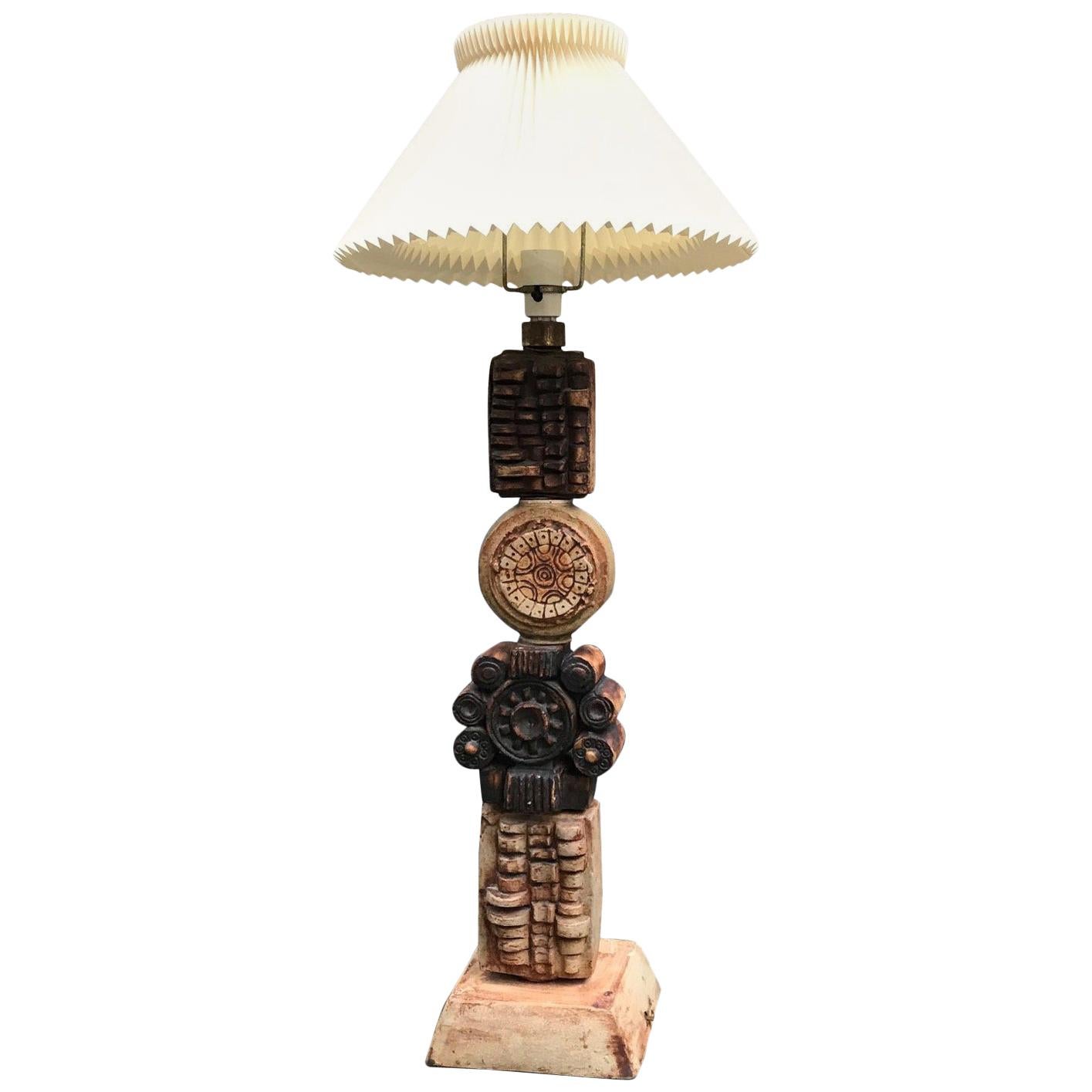
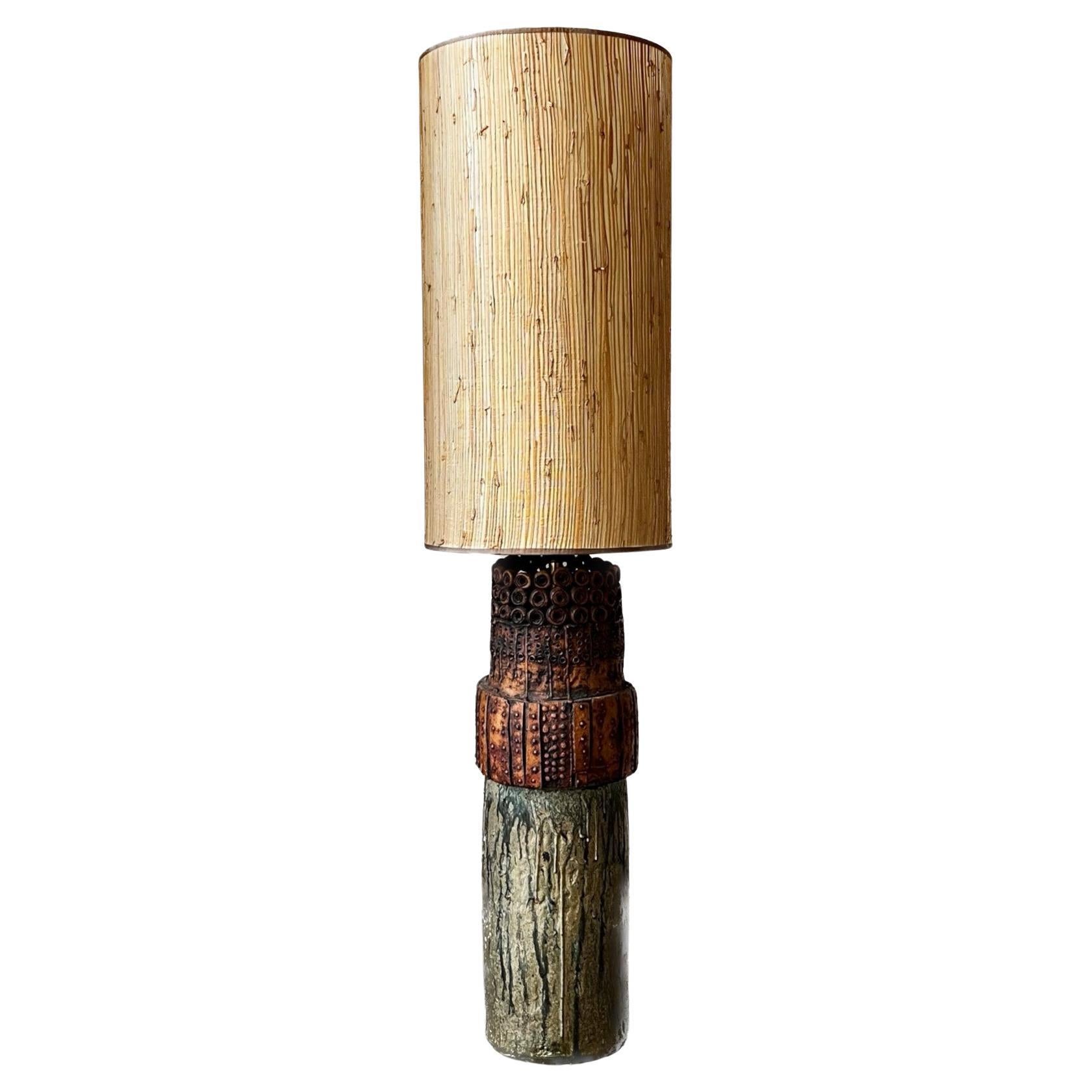


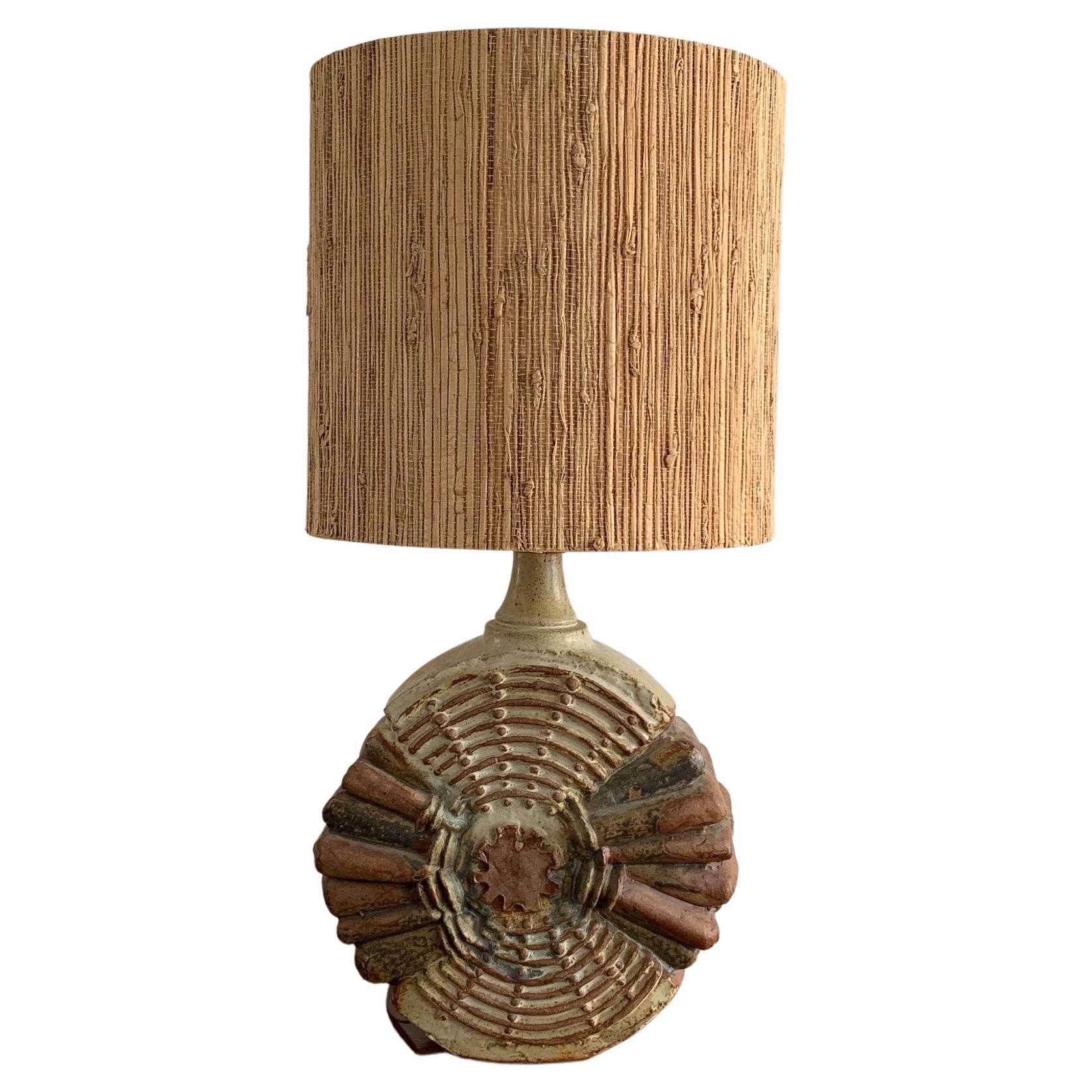
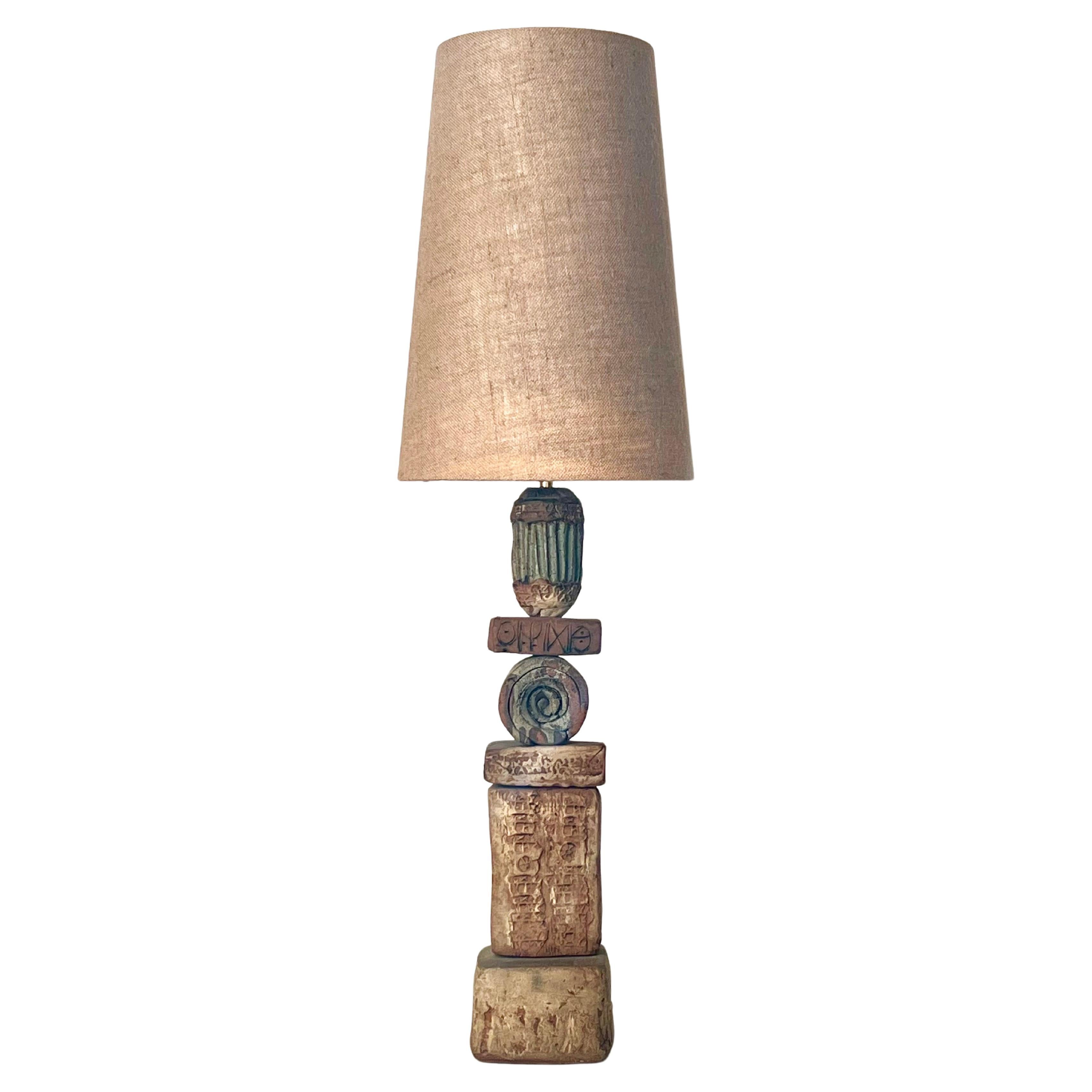

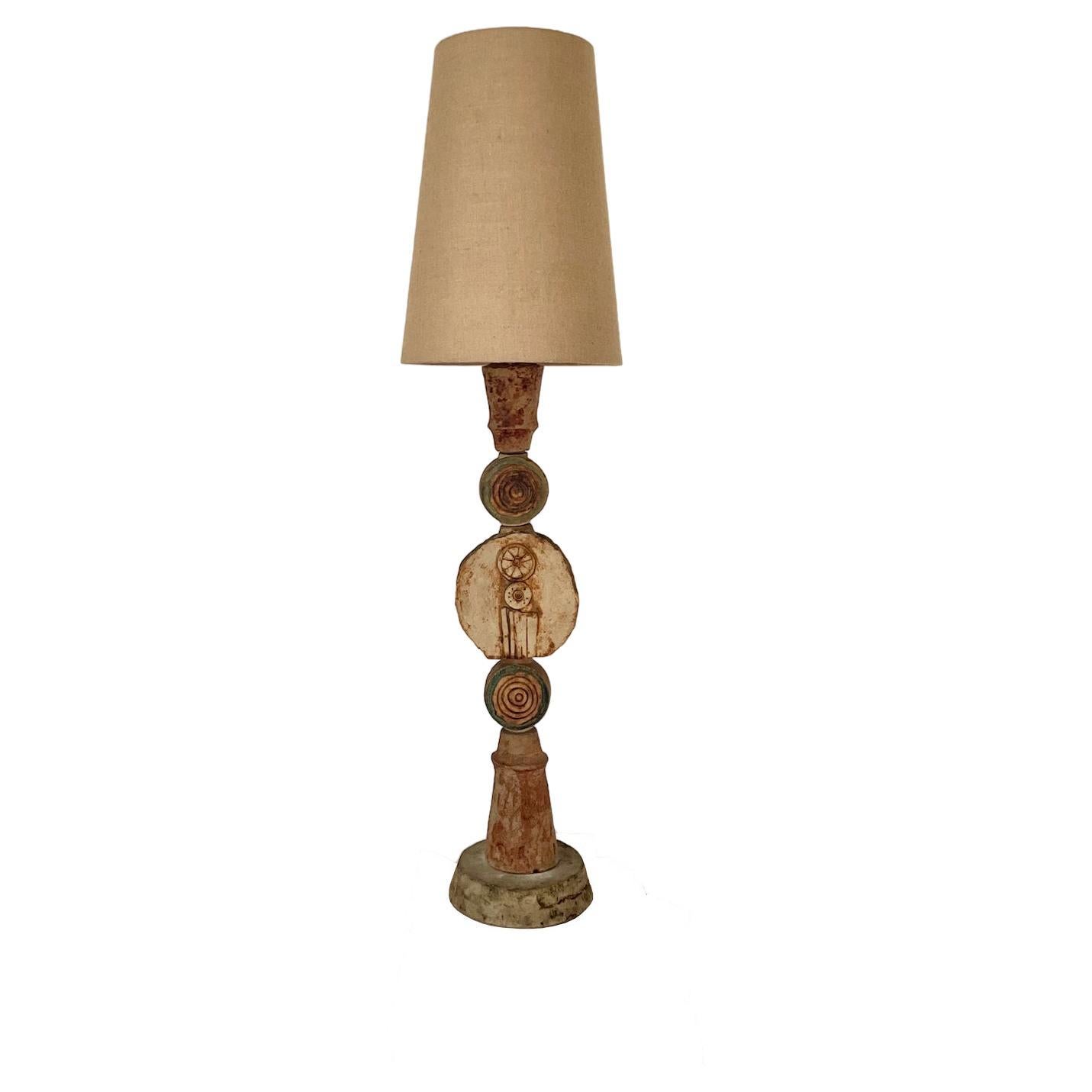
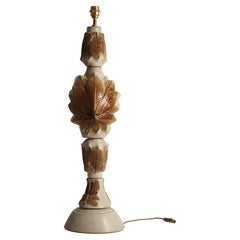
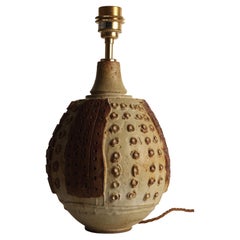
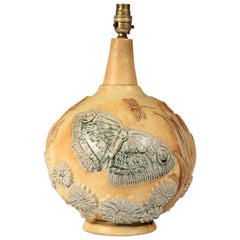

![Bernard Rooke Studio Ceramic Totem Lamp, England [I]](https://a.1stdibscdn.com/bernard-rooke-studio-ceramic-totem-lamp-england-for-sale/f_12672/f_371357421700844408779/f_37135742_1700844409088_bg_processed.jpg?width=240)
![Bernard Rooke Studio Ceramic Totem Lamp, England [II]](https://a.1stdibscdn.com/bernard-rooke-studio-ceramic-totem-lamp-england-ii-for-sale/f_12672/f_391439321712318998130/f_39143932_1712318998540_bg_processed.jpg?width=240)